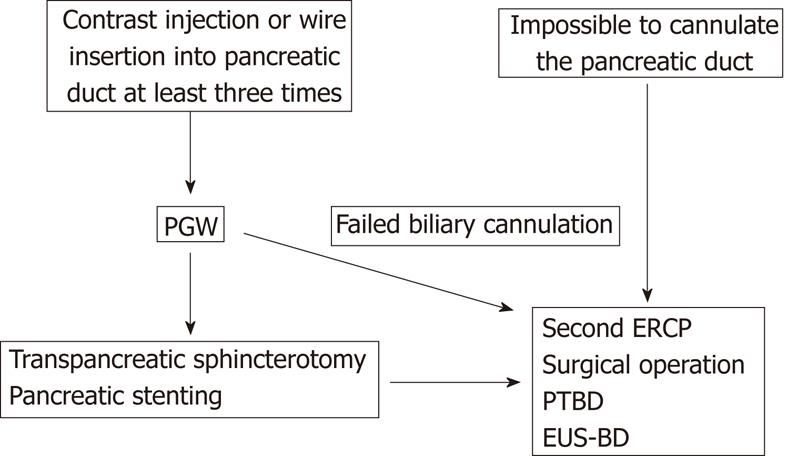Copyright
©2011 Baishideng Publishing Group Co.
World J Gastroenterol. Dec 28, 2011; 17(48): 5289-5294
Published online Dec 28, 2011. doi: 10.3748/wjg.v17.i48.5289
Published online Dec 28, 2011. doi: 10.3748/wjg.v17.i48.5289
Figure 1 Our strategy for difficult biliary cannulation.
PGW: Pancreatic guidewire placement; ERCP: Endoscopic retrograde cholangiopancreatography; PTBD: Percutaneous transhepatic biliary drainage; EUS-BD: Endoscopic ultrasound-guided biliary drainage.
Figure 2 Fluoroscopic image taken during pancreatic guidewire placement using a single-lumen catheter.
A: The injection of contrast medium into the pancreatic duct was repeated for difficult biliary cannulation; B: During pancreatic guidewire placement (PGW), the guidewire pushes contrast medium from the catheter lumen and into the pancreatic ductal system; C: PGW straightens the terminal bile duct and achieves successful biliary cannulation.
- Citation: Hisa T, Matsumoto R, Takamatsu M, Furutake M. Impact of changing our cannulation method on the incidence of post-endoscopic retrograde cholangiopancreatography pancreatitis after pancreatic guidewire placement. World J Gastroenterol 2011; 17(48): 5289-5294
- URL: https://www.wjgnet.com/1007-9327/full/v17/i48/5289.htm
- DOI: https://dx.doi.org/10.3748/wjg.v17.i48.5289










